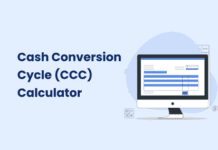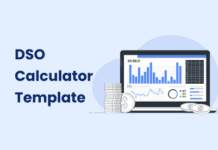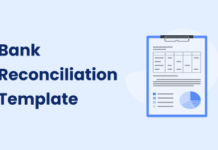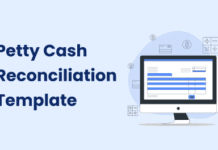Did you know the value of every uncollected dollar depreciates to 98 cents after three months?
Collection teams need to constantly evolve and seek innovative strategies to expedite the recovery process and maintain a steady cash flow. One highly effective tactic is the strategic use of dunning letters. These letters serve as a powerful communication tool to nudge customers toward timely payments while preserving valuable relationships.
In this comprehensive guide, we will delve into the art of crafting impactful dunning letters, providing not only insightful examples but also exploring subject lines that grab attention.
What is a Dunning Letter?
A dunning letter is a form of communication, typically conveyed through emails or physical letters, sent to a customer after the due date. It is a strategic tool designed to collect timely payments to prevent an impact on DSO and ensure healthy cash flow.
In other words, a dunning letter is a transactional letter that contains crucial account and invoice details. Its primary objective is to gently remind customers about their outstanding payments and the potential consequences of non-payment. Essentially, it is a structured and courteous way of collection without jeopardizing the relationship with the customer.
Why is a Dunning Letter Crucial to Your Collection Strategy?
At some point in our lives, we’ve all faced the awkward situation of requesting our own money back. What we often overlook is that the other party might have simply forgotten or run into unexpected problems. Likewise, in B2B the world, a significant portion of failed payments stems from unintentional lapses.
This is where the dunning letter steps in as a vital component of a successful accounts receivable strategy. Beyond serving as a mere reminder, it plays a crucial role in maintaining positive customer experiences. It helps to bridge the communication gap by outlining the consequences of non-payment clearly and respectfully. Dunning letters emphasize the seriousness of the situation and provide a chance for customers to address the unforeseen challenges.
Dunning Letter Timeline – Striking the Right Frequency
While there isn’t a fixed rule for the frequency of payment notices, common practice suggests sending the first at 30 days past due, followed by subsequent ones at 60, 90, and 120 days.
Adjustments need to be made based on your dunning strategies. Sending too few or spacing them too far apart may increase the risk of overdue payments. While sending them too frequently may be unnecessary.
Key Points to Keep in Mind When Drafting a Dunning Letter
The responsibility of a collector is to guide customers through the necessary steps to fulfill their payment obligations. The key lies not just in sending a dunning letter but in crafting it with precision.
Personalization is the key – tailoring the message to the specific customer and situation at hand. Striking the right tone is equally vital, as it can mean the difference between a positive response and a strained customer relationship. By adopting a simple yet professional approach in the dunning letter’s copy, collectors can enhance the likelihood of timely payment while preserving the integrity of the customer-business relationship.
Here are some key points to consider:
Clearly State the Purpose: Explain why you’re sending the email, mentioning the overdue amount. Make it evident that immediate payment is needed.
Payment Details: Provide convenient payment methods and a clear call-to-action with a payment link. Keep the process simple for a positive customer experience.
Set Clear Timelines: Establish deadlines based on customer risk categories, creating a sense of urgency. This ensures customers grasp the importance of timely action.
Contact for Disputes: Include a customer care link in the email for any payment concerns. Address customer skepticism by offering accessible contact details for dispute resolution.
How to Write an Effective Dunning Letter?
According to studies, an average person receives 121 emails per day. To stand out in such crowded inboxes, your email must be well-structured. Every aspect of your email should be valuable and engaging.
Listed below are the three essential components of a dunning letter.
1) Subject Line
The subject is the first thing the recipient sees; make it compelling. Few examples of the subject line:
- Urgent: Complete Your Payment for [Product Name]
- Attention Required: Your Payment to [Company Name] is Late
- Reminder: Your Payment for [Product Name] is Outstanding
- Hey [First Name], Your Payment is Past Due
2) Body Text
Keep the email brief, informative, and maintain a formal tone. Instill urgency and set a clear deadline. It should highlight the overdue payment, provide invoice details, and outline the payment option. Here is an example below:
We have curated more such amazing dunning letters, designed to meet various business needs and align with your collection strategy. Simply download and customize these letters to effortlessly enhance your debt recovery process. Your tailored solution is just a click away!
3) Conclusion Line
Include contact information for any payment queries. It ensures customer concerns are addressed effectively.
Consider these lines for your upcoming dunning emails:
- Feel free to reach out to us at [Number] for any further questions.
- If you encounter any issues, don’t hesitate to get in touch with us at [Contact Number].
- Let us know if we can assist you. Contact us at [Contact Number].
- For additional support and guidance, drop us an email at [Email Address] or reach out to us at [Number].
Best Practices for Dunning Letter
Keep it short and simple: Craft concise dunning letters with a clear message to enhance effectiveness.
Enable replies: Provide a revert back address when sending letters through the mail. For email communication, allow customers to respond by avoiding ‘Do not Reply’ email addresses.
Optimize the call to action: Clearly state and simplify the next steps, using a concise and direct call to action.
Use different sender addresses: When communicating via email, differentiate dunning email addresses from promotional ones by employing separate sender addresses for better results.
Include company logo: Enhance authenticity and customer confidence by including your company logo in dunning letters.
Closing Thoughts
While there are no rules for crafting dunning letters, prioritizing a positive customer experience is crucial. Utilize the insights shared in this guide to minimize customer churn through effective dunning communication.
We know the dunning process is clerical, even so, you need to invest time to compose the right dunning letter for your customer. However, companies have started adopting automated dunning with the growth of digital transformation.
At Peakflo, we help collection teams automate the dunning process and streamline collections. Automate your dunning process to improve efficiency, reduce involuntary churn, and free up time for more critical tasks.









![Why AI Sales Calls Are Making Good Sales Reps Even Better [2025 Guide] ai sales calls](https://cdn-kmjmp.nitrocdn.com/YvtqmrsiHUxqerlSiZgbfzqqTARWTElr/assets/images/optimized/rev-834053b/blog.peakflo.co/wp-content/uploads/2025/09/65168cf6-3001-4733-8cbc-12d5684cf449-218x150.webp)

































